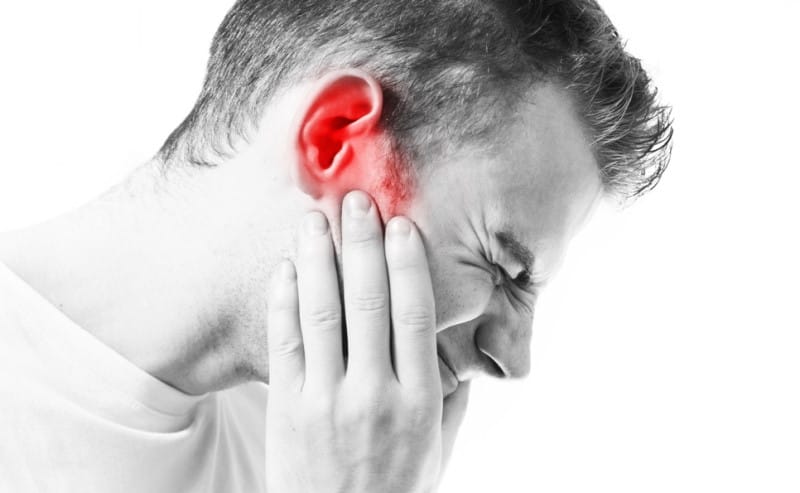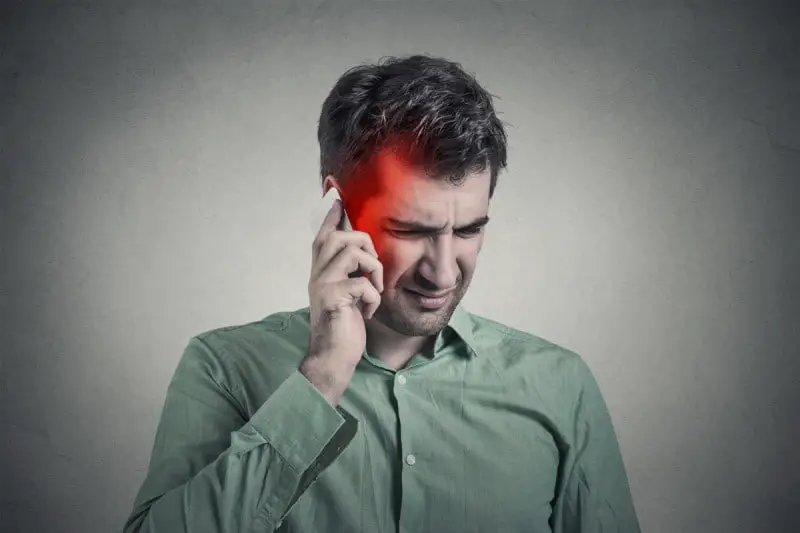Today, we live in a world where the internet of things (IoT) makes our life simple, easy and richer in so many ways. The technological revolution has changed the way we communicate and associate with others. The different devices used for communication increases the number of electromagnetic field (EMF) sources around us.
Although the various technological devices have made our work easier and safer, there are concerns about the health risks associated with EMF radiation from these sources. Individuals exposed to high levels of EMF radiation for some time report various health problems, while others have reported mild symptoms from low-levels of continuous exposure.
Sensitivity to EMF is attributed to negative impacts of electromagnetic field radiation. Individuals who have electromagnetic hypersensitivity (EHS) experience adverse reactions from exposure to electromagnetic fields.
Those who are severely affected by EMF radiation may end up changing their lifestyle completely in order to avoid exposure to fields of various types.
What is EHS?
Electromagnetic hypersensitivity (EHS) is a condition characterized by various non-specific symptoms. This condition is common to individuals exposed to often higher EMF radiation levels than others. For example, living near a power line, or working in an environment surrounded by wireless equipment.
Although EHS is often not considered an officially recognized diagnosis, those who are vulnerable to electromagnetic radiation exhibit various symptoms that are very real to them. This makes it difficult to come up with an agreed-upon definition upon which to base and conduct clinical research.
Each person reacts differently to EMF radiation. There are those who are more susceptible to magnetic field radiation while others are affected by electric field radiation or other frequencies from electromagnetic waves. Therefore, although there is commonality, there is no specific symptom of continuous exposure to certain sources of EMF radiation.
Some devices like cell phones, fluorescent lights, Wi-Fi and other home appliances contribute to the amount of radiation in your home. The radiation emitted has various health risks. Watch this YouTube video to see how electromagnetic fields are dangerous to your body.
How EMF Affects EHS Individuals
Research conducted by WHO on individuals who are sensitive to EMF indicated that the symptoms experienced did not correlate with the EMF exposure.
In these studies, an EHS individual was exposed to EMF radiation from the sources they suspected was the cause of their condition. The aim of the study was to observe the individual under controlled laboratory conditions and record their behaviour.
The study indicated that those who experience EHS couldn’t detect specific exposure to EMF radiation, but neither could those who were considered non-EHS. Having the study in a controlled environment helped to ensure accurate results are obtained. Therefore, the study concluded that there was no relationship found between the EMF exposure and the symptoms experienced.
Some EHS individuals may experience symptoms caused by environmental factors and incorrectly attribute them to EMF exposure. For example, flickering caused by fluorescent lights, bad air flow, poor lighting or design of your office or workstation may be causing physical discomforts that are unrelated to exposure to EMF. Other factors like stress at work can also affect you. These factors are different from EMF radiation, but may be causing similar symptoms.

If you also have pre-existing health conditions, they can trigger certain symptoms which are not actually related to any EMF exposure. For example, you may experience stress related symptoms which are caused by worrying about the health risks associated with EMF. The stress symptoms are not as a result of exposure to EMF radiation.
According to a study done in Japan and Finland, the majority of people suffering from EHS symptoms are women. A few more studies have been carried out, but there is no conclusive research to show why this is so.
However, just like some medical conditions affect one gender more than the other, the extent of EHS symptoms can have biological contributors. Women are more tuned in to the changes that occur to their bodies. This can be a reason why they can more easily notice any EMF symptoms like fatigue, cognitive issues and physical changes in how they feel.
Symptoms Associated with EMF Exposure
Exposure to high-levels of EMF can interfere with your body’s nervous system or damage your body’s cells leaving your body vulnerable to diseases. It can promote the growth of cancerous cells.
Some of the symptoms associated with EMF sensitivity include:
- Fatigue and feeling tired: EMF exposure to high-levels of radiation affects your body’s nervous system functions and can cause issues with your level of energy and how rested or exhausted you feel. High exposure can result in damage of body cells, affect your mood and make you feel more tired.
- Stress: EMF radiation from various sources has some chemical effects. These effects may cause deterioration of cells and create an imbalance in the ionic equilibrium of the body. These molecules are very essential in the functioning of the body and they help the body fight against diseases. As a result, high exposure levels will generate oxidative stress in body tissues.
- Headache: Studies indicate that exposure to extremely low frequency (ELF) EMF from cell phone radiation and microwave radiation (radio frequency signals) may lead to headaches, decreased concentration and impairment of various cognitive functions. Making a phone call for a long period of time increases cases of headaches and migraines for those who are sensitive to electromagnetic fields.
- Sleep disturbance: Exposure to ELF EMF may affect your sleep quality and cause insomnia. EMF from sources like power lines, electrical devices and wiring expose you to ELF fields and other non-ionizing radiation. Increased exposure affects the melatonin hormone in the brain, and that interferes with your sleep pattern hence affecting the quality of your sleep.
- Burning sensation: Low level exposure to EMF radiation is associated with a burning sensation. Some people report having a burning sensation in response to power line stations and DVB-T TV.
- Muscle pain and ache: Exposure to radiation from electronic devices at your home or office including Wi-Fi repeaters, cell phones, TV transmitters and radio transmitters may increase the intensity of joint pains, body aches, and blood pressure disorders for those with an EHS condition.
- Rashes: People with EHS condition develop skin rashes and flushing when exposed to radio frequency radiation from multiple sources at home and in the office. EMF emission from wireless devices worsen the condition.
- Concentration difficulties: Long exposure to radiation from computers, especially those using cathode ray tube monitors, cell phones and printers in an office can result in concentration difficulties. Spending long hours on your computer screen affects your eyes and your brain’s thinking capacity.
- Dizziness: Individuals exposed to microwave signals from working with radar equipment, radios and two-way radio phones report feeling dizziness, fatigue and headaches from prolonged use of these types of equipment.
- Nausea: Individuals with a pre-existing condition may feel nausea, drowsiness, and numbness from constant exposure to various EMF sources. This discomfort can last for a long period of time after getting away from the EMF source contributing to the condition.
- Irritation of the skin: After using a cell phone for a long time, some people report increased temperatures, skin irritation and hypersensitivity and especially warmth on the side of their head or body where the phone was placed. They also feel a burning sensation in the area around the ear.
- Tinnitus: Some people report having some ringing in the ear after exposure to high radio frequency radiation from cell phones or other devices.
- Heart arrhythmia and anxiety: Increased exposure to extremely low frequency (ELF) electromagnetic field radiation has a direct and significant contribution to increased cases of depression and anxiety.
In some severe cases, the electromagnetic radiation is linked to psychological distress.
These symptoms are real to the person who feels them, and each individual can experience different symptoms from exposure to EMF radiation. However, there is no clear diagnosis or scientific research that acts as evidence that the symptoms are caused by an EMF source.
Protection from EMF Exposure
Exposure to different types of electromagnetic radiation have various adverse health concerns. Different sources of EMF leave you vulnerable to the negative effects of radiation. You should be able to feel safe when driving near power lines or when you’re using your cell phone and other home appliances, but some people do not because of their concern about EMF exposure.
Therefore, instead of worrying ineffectively about EMF radiation, you should take action by becoming aware of all the devices causing radiation at your home or office and come up with protection procedures to ensure you protect yourself and your family.
Some of the protection measures you can use include:
- Putting your phone down when not using it. The phone should be placed some distance from you, and you should switch off the Wi-Fi and Bluetooth feature to avoid emission of more RF signals. Read my detailed article on radiation from Wi-Fi and Bluetooth devices.
- Use the speaker function in your phone or use low EMF earbuds to reduce radiation exposure to your ears and brain. Using some headphones, especially wireless headphones, can cause tinnitus and also affect your brain cells.
- Leave your phone in another room when going to sleep. You can also put your phone on flight mode to reduce radiation. You should not carry your phone in your pockets or put it in your bra because continuous exposure to cell phone radiation can cause infertility in both men and women.
- Always keep distance from all EMF emitting devices at your home or office. Devices that emit high-levels of EMF should be kept in a room with less traffic. For example, smart meters, Wi-Fi routers, inverters and batteries should be put in a room which is not visited regularly. You should avoid having these EMF sources near your sitting area or where you spend most of your time.
- Use EMF protection materials and devices to reduce the exposure risks to different forms of EMF radiation. The protective materials can be in the form of clothing, stickers, anti-radiation devices or EMF blocking metal devices such as a Wi-Fi router guard to protect you from negative effects of RF radiation from routers. I have a detailed article on EMF protection clothing you can use to shield yourself from EMF radiation.
- Unplug devices when not in use. Some devices like TV continue to emit EMF radiation even when they are switched off. Unplugging the device will reduce charging of the device capacitors.
- Buy low radiation emitting devices. There are many low EMF emitting devices on the market although they can be expensive. You can use an EMF meter to measure the amount of radiation emitted by the device before buying it.
Low EMF devices give value for your money as well as protect you from the harmful effects of electromagnetic radiation.
Summary
Electromagnetic hypersensitivity (EHS) is associated with different non-specific symptoms that vary from one individual to the other. Based on the severity of the case, the symptoms can vary. Since there is no clear diagnosis for those sensitive to electromagnetic fields, many believe there is no scientific reason to link the EHS symptoms to electromagnetic field radiation.
In addition, EHS is not a medical diagnosis and there is no clear information that links the condition to any medical problem. Therefore, people who identify themselves to the doctor as an EHS individual with EMF symptoms are often treated as psychiatric patients.
Exposure to EMF radiation from household devices like the wireless cell phones, TVs, laptops and home appliances emit different types of radiation. There are people who are more susceptible to radio frequency radiation while other individuals are affected by magnetic field radiation, or electromagnetic fields in general.
If you’re more vulnerable to electromagnetic radiation, you need to know what causes it and reduce your exposure to that type of radiation. As discussed above, there are various ways you can reduce your exposure to EMF radiation.
Identifying the sources of EMF radiation that you’re exposed to will help you to establish appropriate protection methods for yourself. This will reduce your overall health risks associated with EMF radiation.


